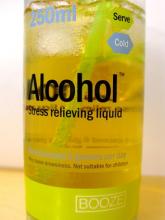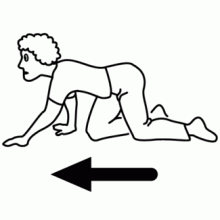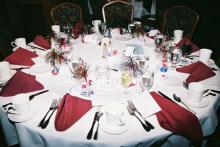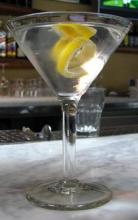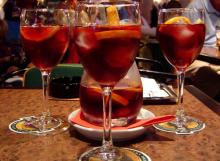A long time ago in the very first city, a walled outcropping of stone long lost to history, someone had the bright idea to start selling alcohol out of a particular building. This was the first bar. Then, somewhere else in the city, somebody else had the same idea and opened up the second bar. People either went to one or the other, whether by proximity or preference, and it went this way for a long time. Then, on a particularly inspired night, a patron at one of the bars convinced his friends to walk with him to the other. This was the first bar crawl. Since then, it has been a time-honored tradition that has transcended culture to make a night of going from one alcohol-serving establishment to another in search of, if nothing else, variety. It is an understatement to say that many mistakes have been made throughout history in this practice. Don't make the mistakes of your forebears. Follow these rules to have a safe, satisfying bar crawl experience.
1. Don't Crawl Blind
Not all bars are created equal. These days, liquor vendors vary greatly in price, atmosphere, clientele and products served, so going in without a plan of attack can lead to some confusion and ugliness. At least one participant in the bar crawl should know the city well enough to navigate the party toward the right establishments and far, far away from the wrong ones. Which leads us to the necessity of...
2. Choosing The Right Places
Do not include your favorite bar in your crawl. Do not include your second-favorite. Hell, make a list of your top ten favorite bars in the city and then do everything you can to avoid them on the night of the crawl because you absolutely don't want to drag places that respect you into what is practically guaranteed to be a less than respectable night. Go to bars you've never been to before, go to dives you don't care about, even throw in a bar you absolutely hate so nothing will be lost if your drunk, wandering behavior gets you thrown out.
3. Travel With Trust
You may have a lot of people you like to drink with, but that doesn't mean you have a lot of people you should trust in a crawl. The party needs to be composed of (mostly) trustworthy folks who can rely on one another to keep the whole group safe. Remember, you're not just wiling away the night in the confines of a single, stable atmosphere, you're venturing out into the night in progressively deeper states of drunkenness. The last thing you want is a leak in the boat. Also, don't bring a date. They'll want to spend more time with you than with your friends, which will force you to choose between them.
4. Stick To One Drink
Just because you're looking for variety in people and places doesn't mean you should be looking for variety in libations. Your ideas are bound to get worse as the night draws on, so do your stomach and your friends' shoes a favor by choosing a drink you like and committing to it for the duration.
5. For Heaven's Sake, Eat Something
It doesn't matter when, just that you put something other than alcohol in your stomach some time over the course of the crawl. At the end is usually the best time, as it's clear by that point who's going to get sick and who's going to handle their stuff. Find an all-night diner, an after hours pizza place or even just a convenient hotdog stand and let the party decompress around the timeless satisfaction of comfort food.


